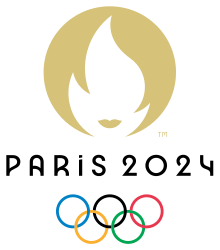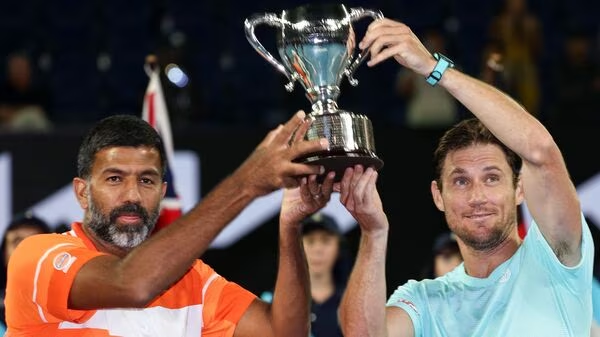Description

Copyright infringement not intended
About:
- The Union Ministry of Road Transport and Highways is celebrating Road Safety Week from 11th to 17th January 2023, under "Swachhata Pakhwada".
- The main objective is to promote safer roads for all.
- Various activities will be organized across the country to create awareness about the importance of road safety and measures to ensure road safety for all.
Road accidents in India:
- India ranks first in the number of road accident deaths across the 199 countries.
- With only 1% of the world's vehicles, India accounts for 11% of the global death in road accidents, the highest in the world, according to World Bank.
- Witnessing 53 road crashes every hour; road accidents are killing 1 person every 4 minutes.
- The country accounts for about 4.5 lakh road crashes per annum, in which 1.5 lakh people die.
- In the last decade, 13 lakh people died and another 50 lacks got injured on Indian roads. The 2019 World Bank report, titled 'Guide for Road Safety Opportunities and Challenges: Low- and Middle-Income Countries Country Profiles', puts the road crash and serious injury cost estimate at 7.5 percent of India's GDP or Rs 12.9 lakh crore for 2016.
Reasons behind Road Accidents in India:
- Crossing the speed limit: Over-speeding is one of the major causes of road accidents in India.
- Intoxication - Driving under the influence of heavy medication, alcohol, or drugs is another major reason for road accidents in the country. Any driver found with more than 30 mg of alcohol in 100 ml of blood is under the influence of alcohol and is a culprit of drunk driving.
- Reckless driving - Reckless driving includes over-confidence, street racing, running stop signs and red lights, changing lanes too quickly, tailgating the vehicle in the front, and hurling abuses at other drivers on the road.
- Not following rules and regulations on the road: Being unaware of rules and regulations on the road or knowingly ignoring them is another major cause of road accidents in India.
- Deplorable conditions of the road: Despite the vast network of roads in the country, most of them have potholes, are without road signs or are under construction for a long period. All these lead to road accidents.
- State of the vehicle: Many vehicles in India are not fit enough to operate on the roads in India. For instance, a vehicle may operate on the road without proper tires, the vehicle may be overloaded or it might not be repaired.
- Distracted Driving: The number of accidents occurring due to distracted driving has increased in the past decades. Reading messages, replying to texts, taking calls, reading, grooming, etc.
- Avoiding Safety Gear like seat belts and helmets.
Related News
- Recently released data by the National Crime Records Bureau showed that over 1.55 lakh people died in road accidents in 2021, the number is high as compared to the 1.33 lakh deaths in 2020.
- The Union Ministry of Road Transport and Highways has released a video suggesting people wear seat belts to reduce the impact of an accident by 80%.
- The parliament has passed the Motor Vehicles (Amendment) act 2019 to ensure road safety.
.jpeg)
The Motor Vehicles (Amendment) Act, 2019
- The Motor Vehicles (Amendment) Act, of 2019 amended the Motor Vehicles Act of 1988.
- The Motor Vehicles Act, of 1988 regulates the licensing and registration of motor vehicles and
- The main objectives of the amendment act are to address several issues such as;
- Road Safety.
- Third-party insurance.
- Regulation of taxi aggregators.
- Recall unsafe vehicles.
- Compensation for victims in case of road accidents.
- The Union government has initiated a scheme for cashless treatment of road accident victims during golden hour.
- Golden hour is the period of up to one hour following an accident, during which the likelihood of preventing death through prompt medical care is the highest.
- The act increased the minimum compensation for hit-and-run cases as;
- In case of death, from Rs 25,000 to two lakh rupees.
- In case of serious injury, from Rs 12,500 to Rs 50,000.
- The Union government has created a Motor Vehicle Accident Fund, to provide compulsory insurance coverage to all road users in India. The fund will be utilized for;
- Treatment of persons injured in road accidents during the golden hour.
- Compensate the family of a person who died in an accident.
- Compensate the person injured in a hit-and-run accident.
- The act defines a good samaritan as a person who provides emergency medical or non-medical assistance to a victim at the accident site. The assistance must be;
- In good faith.
- Without the expectation of any reward.
- Good samaritans will not be responsible for any civil or criminal action for any injury to or death of an accident victim caused due to their negligence in assisting the victim.
- The Union government can order for recall of motor vehicles if a defect in the vehicle may cause damage to the environment, the driver, or other road users.
- Developing a National Transportation Policy, in consultation with state governments. The Policy will:
- Establish a planning framework for road transport.
- Develop a framework for the grant of permits.
- The act provides for a National Road Safety Board, to be created by the central government through a notification. It will advise the central and state governments on all aspects of road safety and traffic management including;
- Standards of motor vehicles.
- Registration and licensing of vehicles.
- Standards for road safety.
- Promotion of new vehicle technology.
- It increased penalties for several offenses under the Act.
- The maximum penalty for driving after consuming alcohol or drugs has been increased from Rs 2,000 to Rs 10,000.
- If a vehicle manufacturer fails to comply with motor vehicle standards, the penalty will be up to Rs 100 crore, imprisonment of up to one year, or both.
Concern
- With growing urbanization and rising incomes, the number of motor vehicles in India has been increasing steadily.
- The increased number of vehicles on roads, along with the lack of a coordinated policy has increased the number of road accidents.
- Compliance with seat belts in the rear seat is poor in India. For most people, wearing seat belts is mandatory only for the front seat.
- Sometimes people prefer to sit in the back just to avoid wearing a seat belt.
- Two-wheelers drivers usually don’t wear helmets or wear cricket helmets that offer very little protection in an accident.
- Existence of a large number of agencies at the center and state with little coordination among them.
- Poor enforcement of traffic laws.

Way Forward
- Policy interventions, technological upgrades, and awareness campaigns can improve road safety and reduce road accidents or death due to accidents.
- We need to create an institutional framework to bring about systemic changes, instead of routine police drives against people who drive without seat belts or helmets.
- Instead of looking at the examples of the US and Sweden to develop an Indian road safety policy, it would be better to look at Brazil or China since they would be of greater relevance.
- Any measure for improving road safety and traffic management would not be successful unless the menace of corruption is taken care of.
https://www.pib.gov.in/PressReleasePage.aspx?PRID=1890090
















